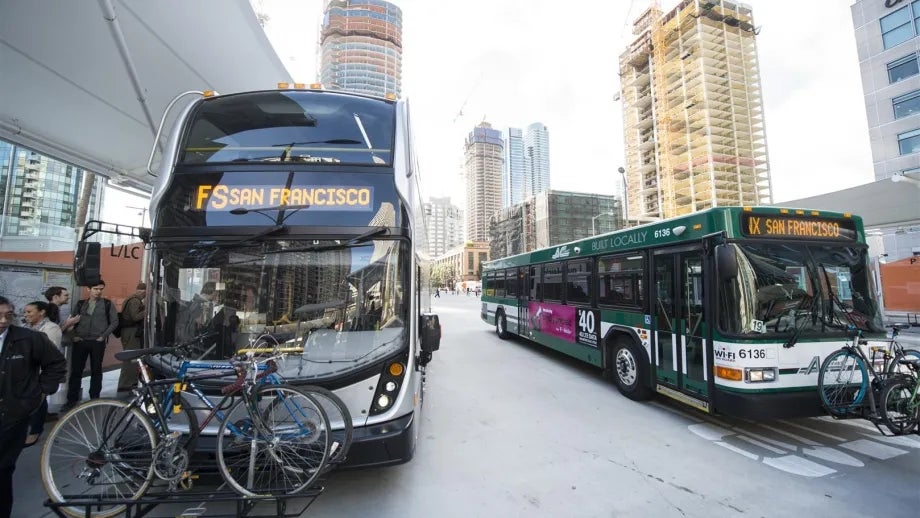Bay Bridge Forward to Deliver Congestion Relief to San Francisco-Oakland Bay Bridge
The San Francisco-Oakland Bay Bridge corridor will soon see congestion relief with a $40 million investment from MTC through the “Bay Bridge Forward” initiative. MTC, in partnership with Caltrans, AC Transit, WestCat and Water Emergency Transit Agency (WETA), created the program to move more people in fewer vehicles, relieving traffic congestion and transit crowding within the most congested east-west Bay crossing in the Bay Area. This $40 million funding package consists of Regional Measure 2 toll funds ($21 million) and $19 million in federal FAST (Fixing America’s Surface Transportation) Act funds through MTC’s One Bay Area Grant Program. At its July 2016 meeting, the Commission approved the investment plan to deliver the suite of near-term, low-cost and high-impact operational strategies embedded in Bay Area Forward, as follows.
- West Grand HOV/Bus Only Lane – Convert a shoulder of West Grand Avenue on-ramp in Oakland to a bus/high-occupancy vehicle (HOV) lane to enable buses and HOVs direct access to the toll plaza
- Bryant St. On-Ramp – Pilot HOV enforcement technology to reduce HOV violations, and convert existing HOV lane to an express lane, which will be free to carpools and open to solo drivers who have a choice to use the lane by paying a toll.
- Casual Carpool – Establish casual carpooling pick-up locations at key locations in San Francisco and along Interstate 80 in the East Bay
- Integrated Bridge Corridor – Integrate and optimize traffic management systems at all bridge approaches.
- Higher Capacity/Increased Express Bus Service – Retrofit buses and increase frequencies on impacted AC Transit transbay routes, and add double-decker buses on the most productive AC Transit and WestCAT Transbay express bus routes.
- Pilot Express Bus Routes – Pilot new AC Transit Transbay routes to serve increasing demand from inner East Bay residents.
- Transit Signal Priority – Give buses priority at traffic signals on the West Grand Avenue approach to the Bay Bridge.
- Commuter Parking – Establish commuter parking in the East Bay to encourage carpool and express bus ridership.
- Higher Frequency Ferry Service – Increase service frequencies on the Alameda, Oakland and Vallejo routes.
- Flexible On-Demand Transit – Provide on-demand transit services from the East Bay to job centers outside of downtown San Francisco that are not well-served by transit.
- Shared Mobility – Continue zero-dollar partnerships with shared mobility providers to take advantage of emerging carpooling, vanpool and transit services
The Bay Bridge has long been at maximum vehicle capacity during peak hours, with an estimated 260,000 vehicles traveling across the bridge daily, wherein nearly 50 percent of the seats are empty. “MTC is directing this boost in funding to the most congested corridor for commuters,” said Anne Richman, MTC’s director of Programming and Allocations. “MTC is investing dollars in Bay Bridge Forward to fill empty seats by encouraging carpooling and providing high-capacity transit to increase the number of people, as opposed to the number of vehicles, who travel through the corridor.” For more information, review the OBAG 2 Update memo from July’s commission meeting.
Submit your comment
In order to receive a reply to your comment, please provide an email address.


It is worth noting that the AC Transit Transbay network is not that extensive. It is based on the Key system, but when that was being developed, most of the major East Bay streets already had street car lines. The Key System had to find alternative streets, and so today most major streets (San Pablo, Telegraph, Broadway/Collage, Upper Grand, Foothill/Bancroft and International) do not have Transbay Bus services. People wanting to get to San Francisco either drive or use BART.